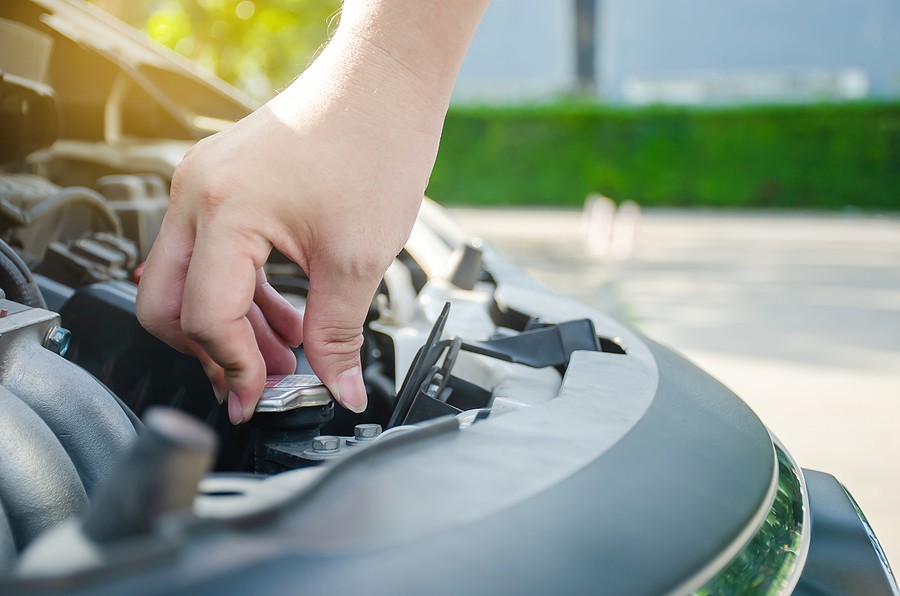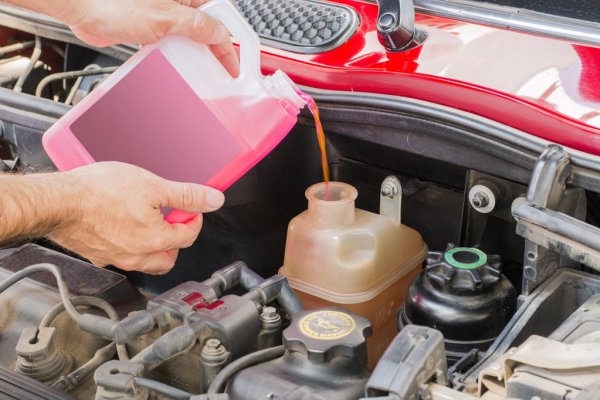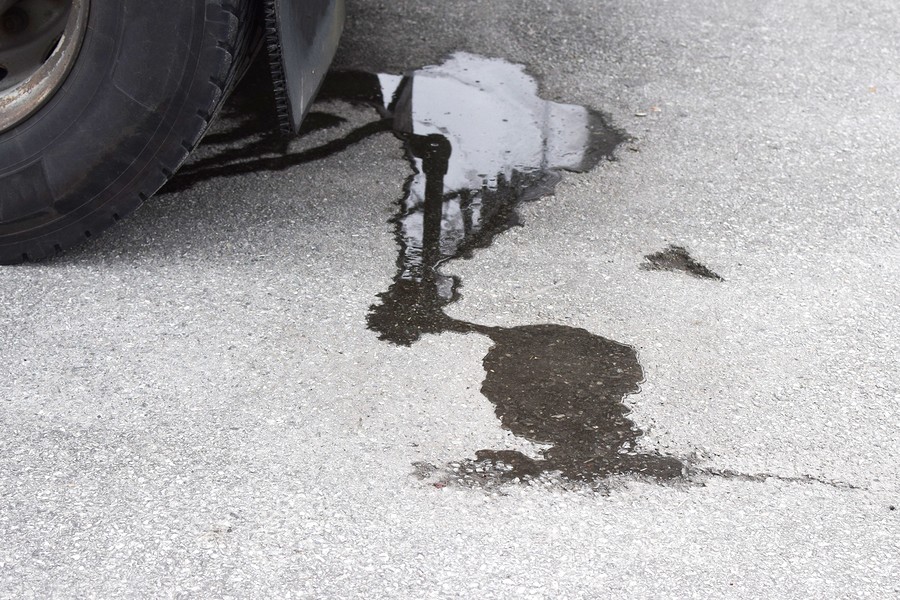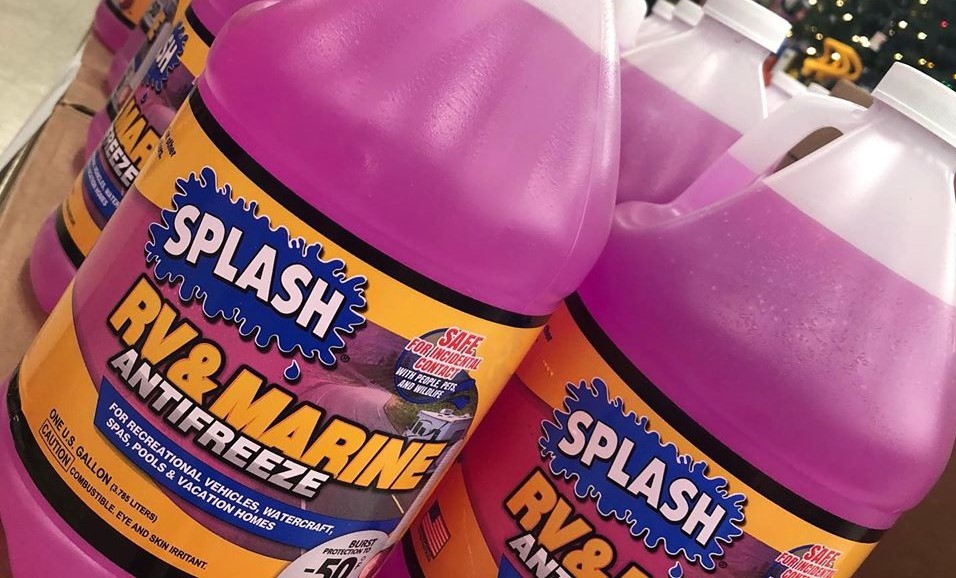If you're searching for “how to know if a coolant is bad,” below are the most common signs:
- Coolant color change
- Visible particles
- Corrosion and rusts
Your vehicle contains a lot of fluids, and each fluid is responsible for a specific job. One of the most common fluids is the coolant, sometimes known as antifreeze. The antifreeze is responsible for cooling down the engine, ensuring it doesn't exceed the maximum threshold temperature, and avoiding overheating.
Over time, the column will not stay with the same quality, and that's why you must identify situations where the coolant is not the top quality so you can change it or perform what's known as a coolant flush.
This article provides you with everything you need to know to help me understand the importance of having a proper coolant, signs and defining a bad coolant, and recommendations for what's involved in the coolant flush and how to monitor the coolant level.
Why is it critical to have proper coolant?
Before we dive into the details of the question “How to know if a coolant is bad,” it is important for you to understand how critical it is to have the proper coolant, including maintaining its quantity and quality.
The coolant is an important fluid in your vehicle that is responsible for ensuring that the engine temperature does not exceed the maximum threshold. In other words, the coolant will be allowed to run around the engine when the engine's temperature exceeds what the engine can handle.
When the coolant starts running around the engine, it drops its temperature until a certain point where the engine does not need this help. This is done using what's known as the thermostat.
You must maintain the top coolant, not only in quantity but also in quality. Because over time of use, this quant is expected to get dirty as it collects dirt and debris from around the engine, and when this happens, its quality is not the best to the point that it can cool the engine temperature down.

How do you know if a coolant is bad?
Now, we have a general idea of what could happen to the coolant as it ages and how its quality can impact the engine's performance. The next step is understanding the signs that could help you identify a bad Coolant that you can replace immediately.
In general, when the coolant is bad, you'll deal with one of the following symptoms:
1. Coolant color change
The first thing that might change when your coolant goes bad is its color. Look at the reservoir and see if it's still in a pinkish fish Color. If that's not the case, then it might be the perfect timing to replace this coolant and use a fresh one.
Remember that the cooling system might be very hot, and before you do any visual inspection, you have to be careful and let your vehicle cool down for a bit. Typically, experts recommend living it for at least 30 minutes.
2. Visible particles
Another thing you could try by performing another visual inspection is to look at any potential particles inside the coolant. In that case, the coolant collected a lot of debris and contaminants from around the engine, including some rust.
When there are a lot of contaminants and particles in the coolants, it won't perform well, and it will have a lot of pressure that might lead to further problems, including coolant leak, a severe issue that might destroy the engine.
3. Corrosion and rusts
Finally, you can also look at the coolant and check for any signs of potential corrosion and rust around the engine components that the coolant runs through. If this happens, it might mean that some weak seals or additional art particles are getting inside the coolant and impacting its quality.

How do we test the cooling quality?
While performing a visual inspection could help you identify whether you are dealing with a bad Coolant, sometimes, if you're a mechanic, you might need to look for more advanced options to help you confirm the problem and make the right decision about flushing the coolant.
1. Coolant tester usage
The first and most common method for testing the coolant quality that your mechanic might use is known as the coolant tester usage. This involves A hydrometer or refractometer that measures the coolant's boiling and freezing points.
Every coolant will have specific boiling and freezing points, and if these points are not within the proper range, it might indicate that the coolant quality is not as good, and it's time to perform a coolant flush.
2. PH testing
Another test that mechanics typically use for form is what's known as the ph test. In this test cover, they use specific strips to help them check for the acidity and alkalinity of your coolant. If these numbers are severe, it might indicate that the coolant is due for a flush.
3. Coolant test strips
Finally, there are specific test strips that your mechanic might use to take a quick look at the coolant to confirm all of its skirts are six. They typically measure its PH, overall condition, and corrosion inhibitors.
Your mechanic dips these strips inside the coolants and compares the results to the typical chart. If any numbers are off the charts, you can't be due for replacement.

How do you measure a coolant level?
Not only do you need to maintain the coolant quality, but you also need to ensure that it's not leaking outside the car because this is a typical symptom of a bad coolant. Therefore, you need to measure the coolant level between now and then to see if there's anything reflected or any signs of potential leaks due to the coolant quality.
There are two different ways we can measure the current level in your vehicle, including the following:
1. Monitoring the reservoir
This simple approach involves performing a visual inspection of your coolant reservoir. The cooler server is transparent, meaning you can see the level underneath it. Therefore, you can take a look and see if the client is within the minimum and maximum marks.
2. Checking underneath the radiator cap
Another thing you would check is opening the radiator cap and looking visually to see where it is sitting. This allows you to check how much count you have and see whether it's very low or very high.
Remember that any of these methods must be done when the coolant and the cooling system are cooled down. In other words, you cannot, and you're not recommended to open the radiator cap unless your vehicle is cooled down for at least 30 minutes if not one hour.
Otherwise, it could let you risk getting burned by the extremely high coolant that might be very hot since it's been running around the engine.

What is involved in the coolant flush?
If your mechanic confirms that your coolant is not of good quality, he will recommend what's known as the coolant flush. The coolant flush is a process where the coolant is removed completely from your vehicle and replaced with a fresh one.
This way, your mechanic confirms that your coolant is no longer contaminated with debris or any potential rust or corrosion. He also confirms that your vehicle owner's manual recommends the coolant. Otherwise, you might deal with other complications that might cost you the vehicle if you choose a cheaper one to save money.
Your vehicle owner's manual should have details about when to perform a coolant flush. However, you cannot simply rely on that because some external conditions might force you to perform a coolant flush before then.

How to know if coolant is bad: Conclusion
Understanding how to know if a coolant is bad is a critical piece of information you must wear yourself with as a driver. Without that, you might continue driving your car with a bad coolant, leading to severe engine damage.
This article provides detailed guidance to help you identify situations where you're driving your car with a bad coolant. It also highlighted all the details you could expect when performing a coolant quality test and a coolant flush.
If you find that your vehicle is in bad coolant, you have to flush it out immediately to avoid dealing with further complications that might cost you the vehicle.
If your vehicle already suffers from many problems and feels it's not worth performing equivalent flush, you can always consult Cash Cars Buyer at 773-791-4363.
If you're interested in similar posts, we highly encourage you to visit our blog by clicking here.



